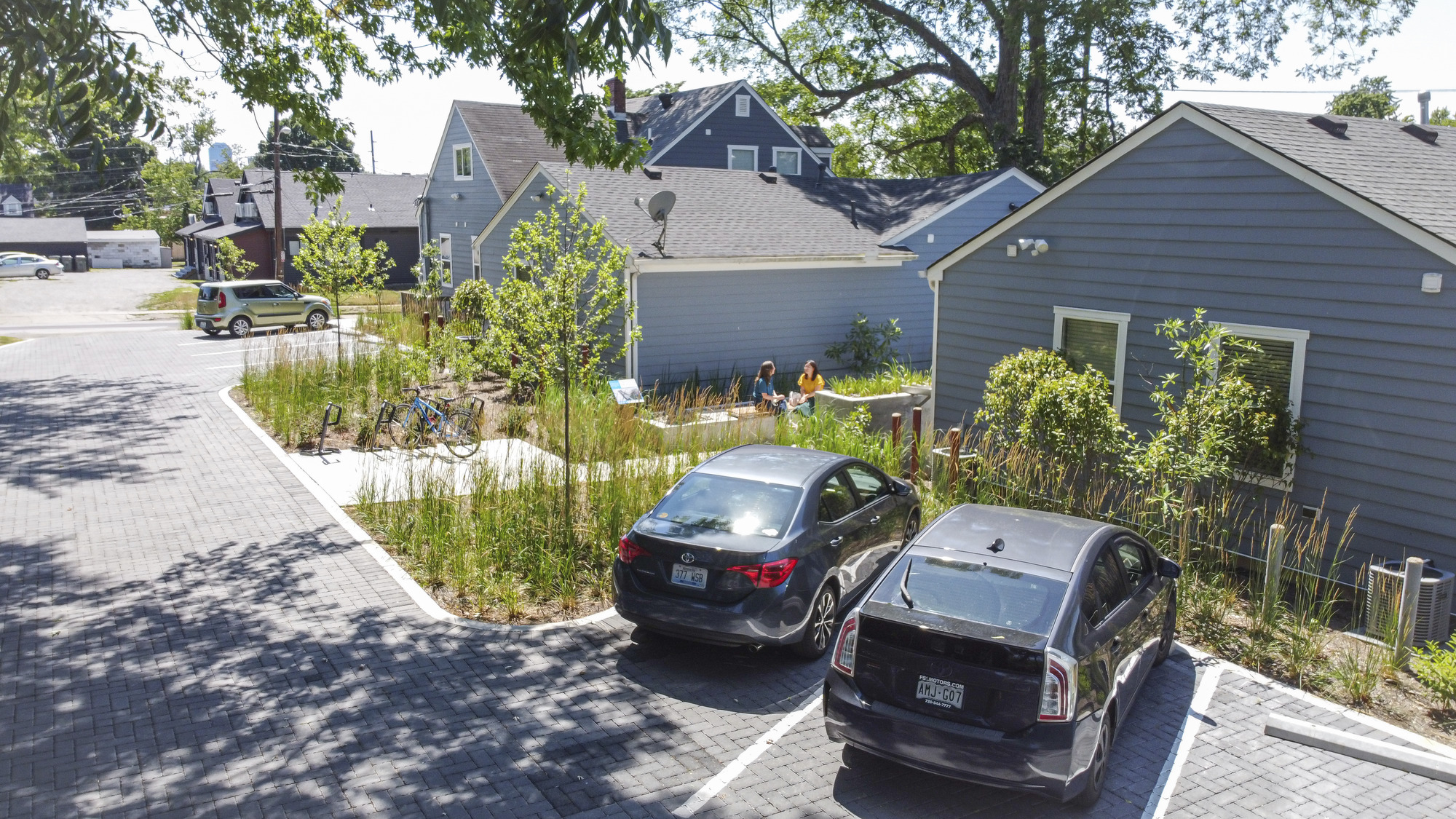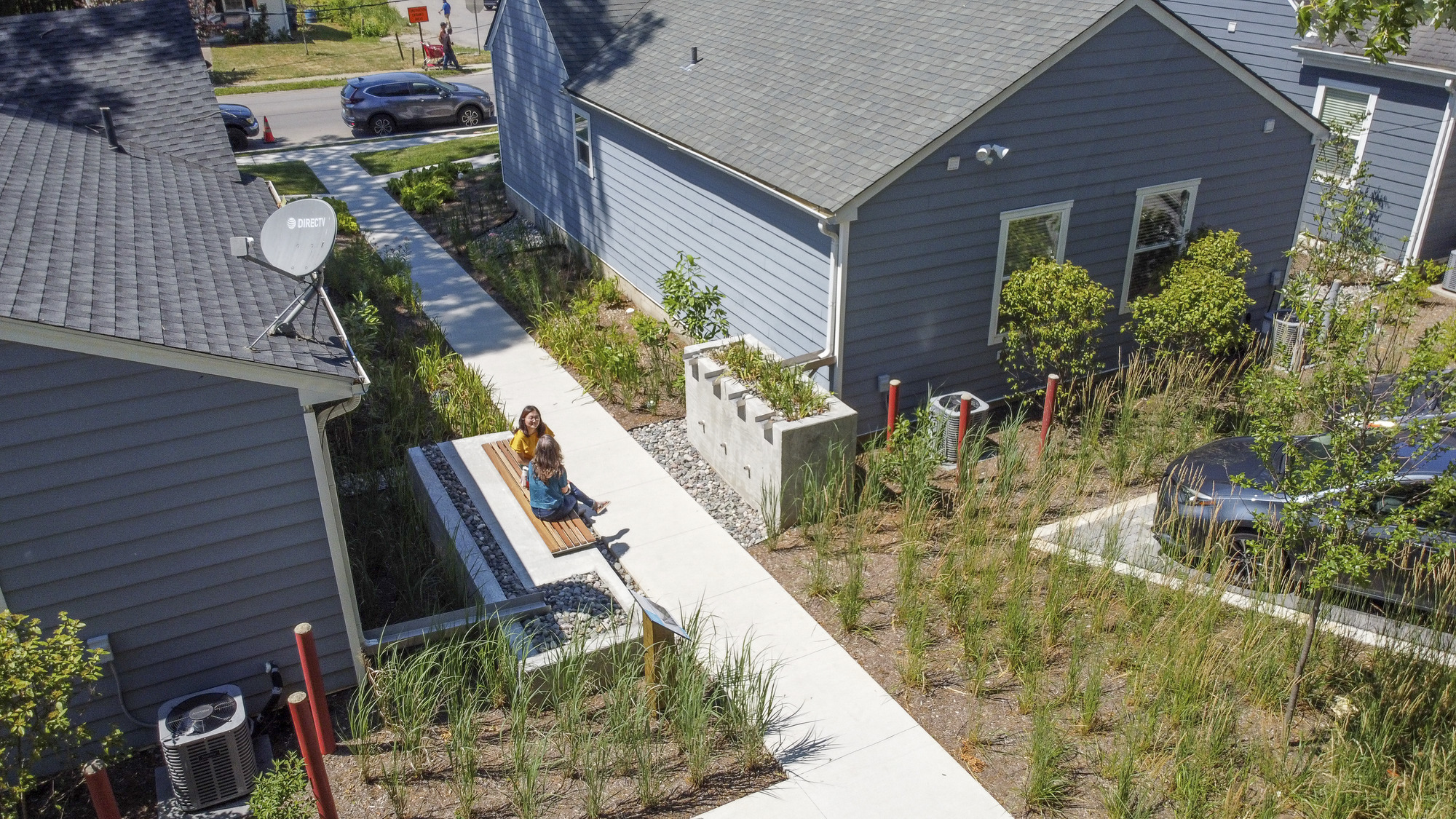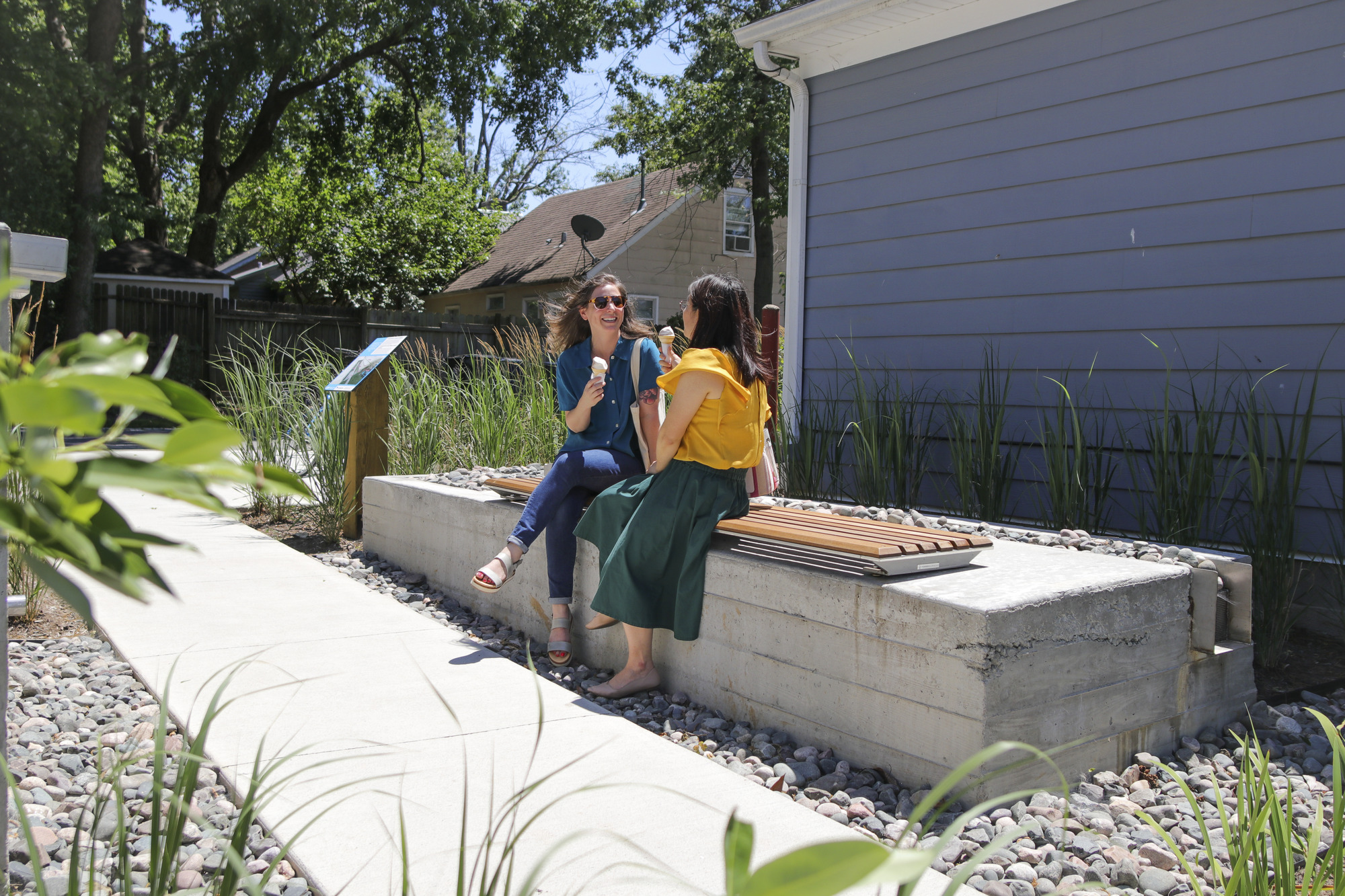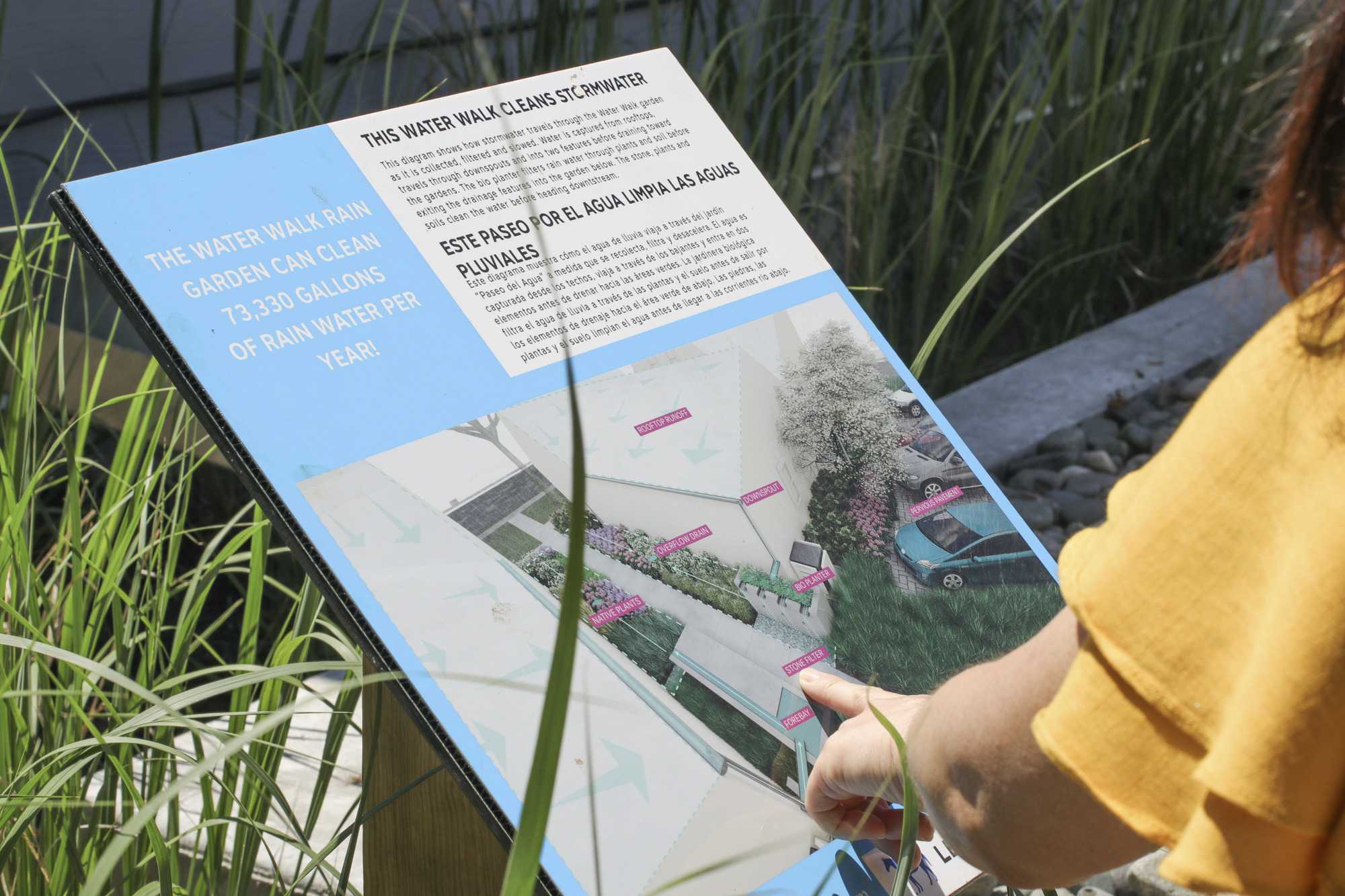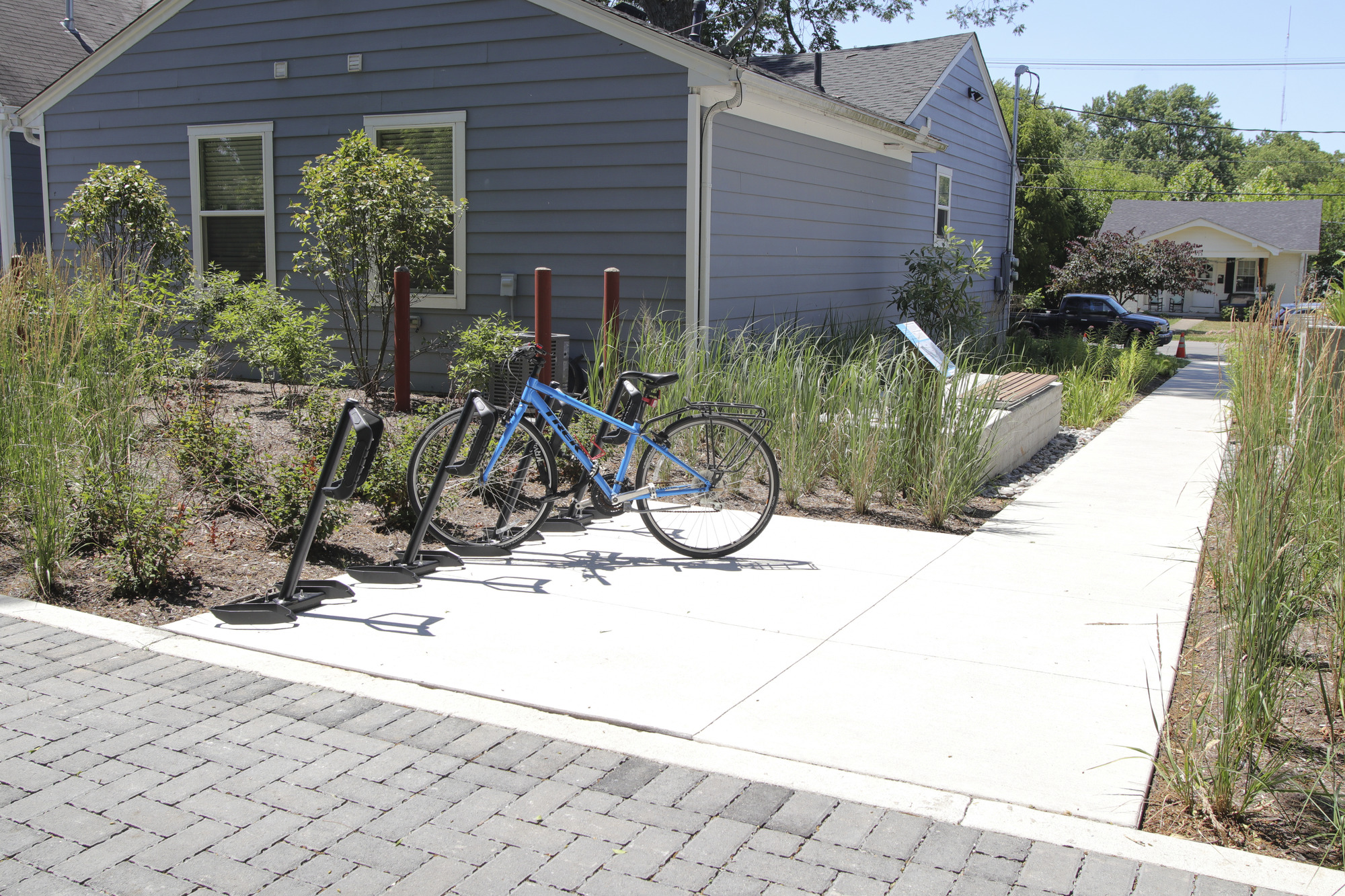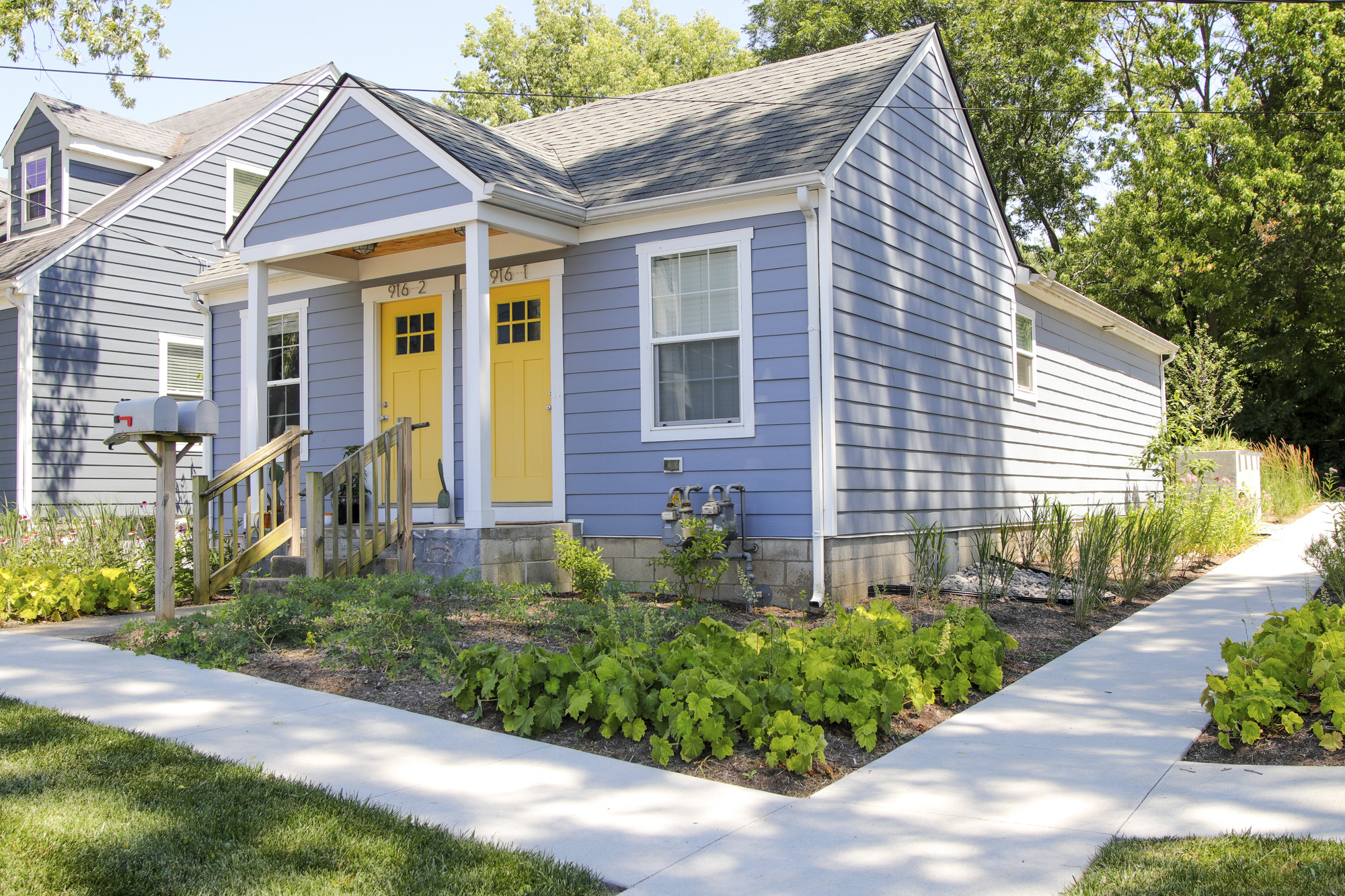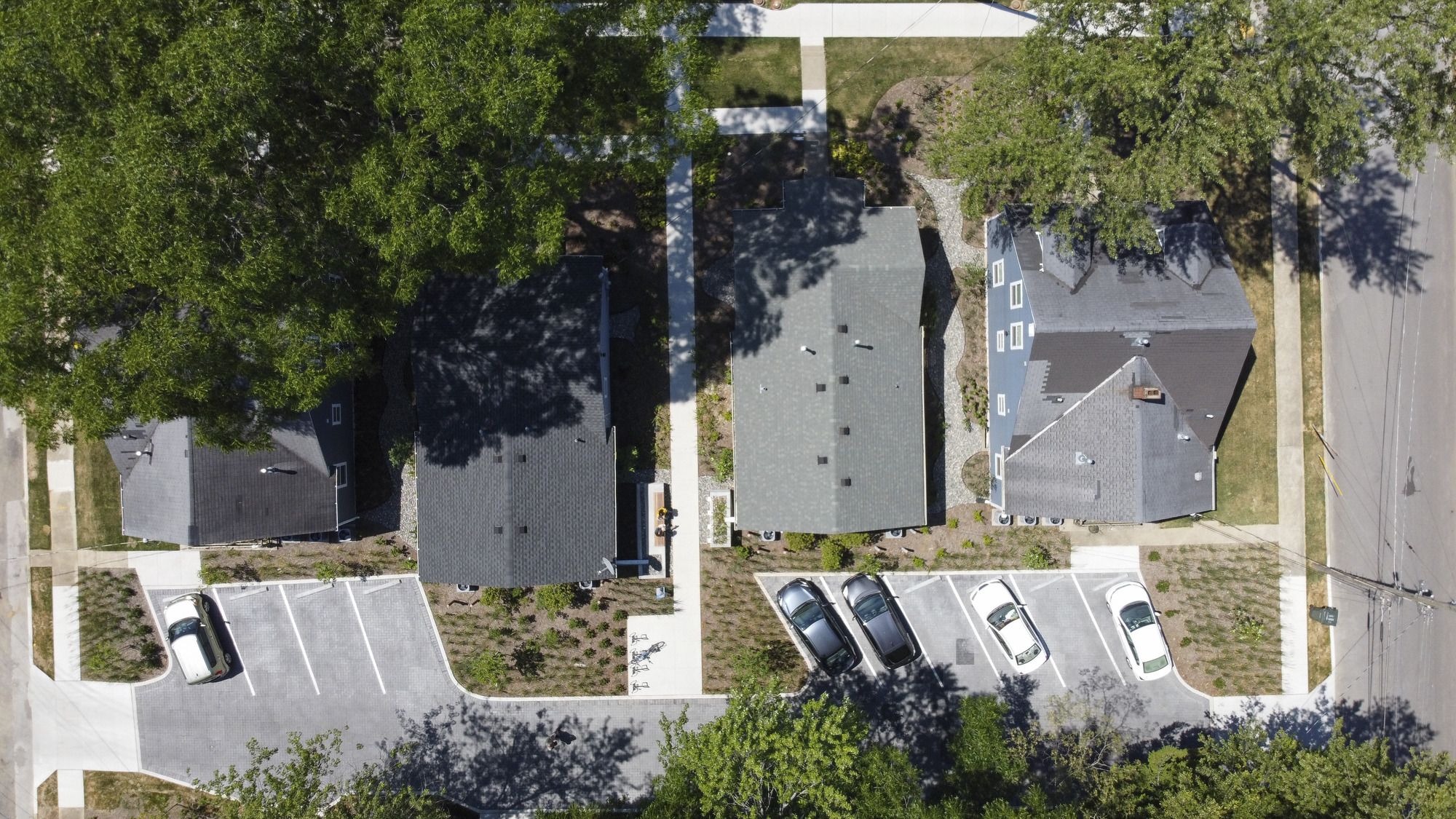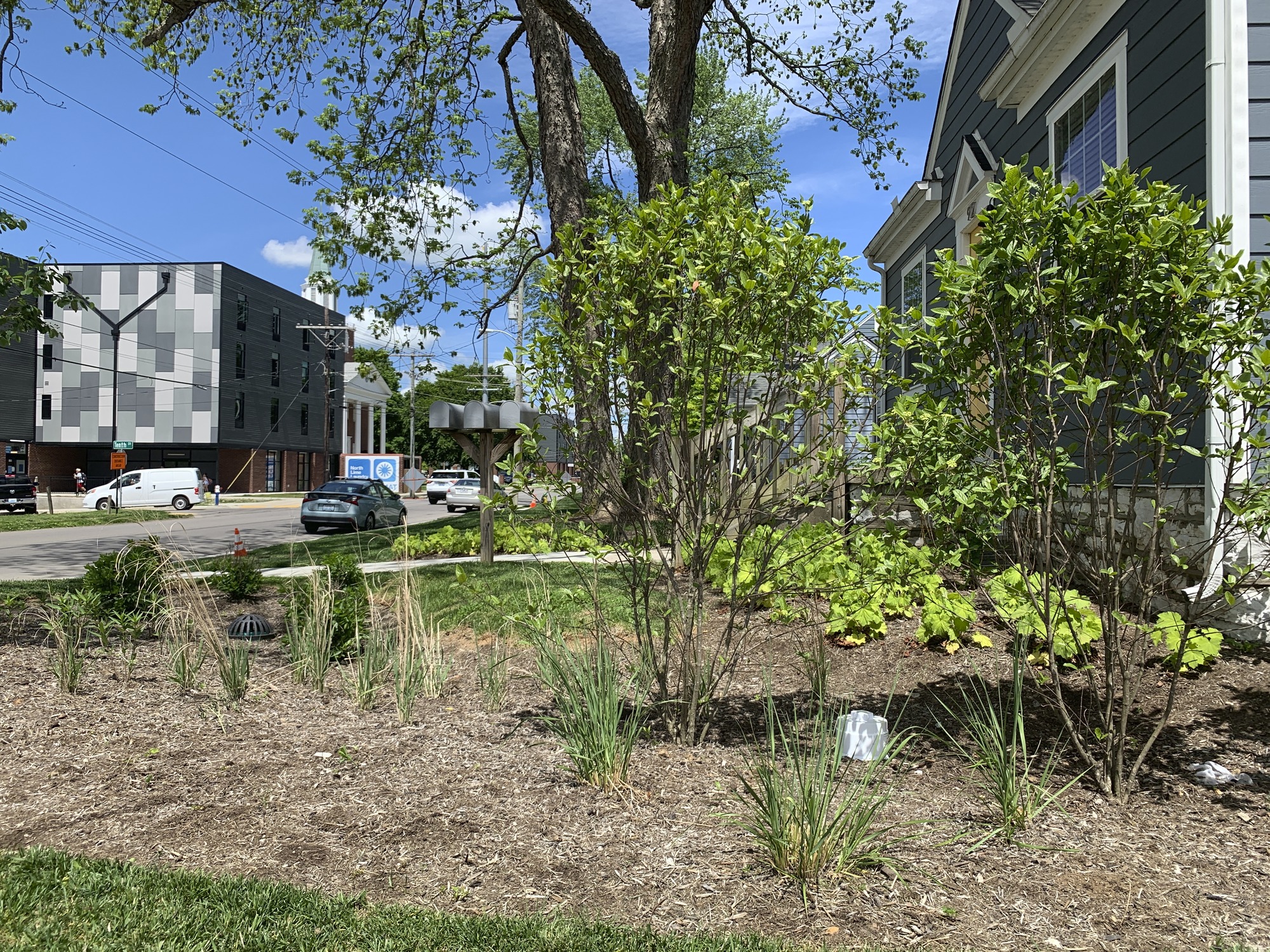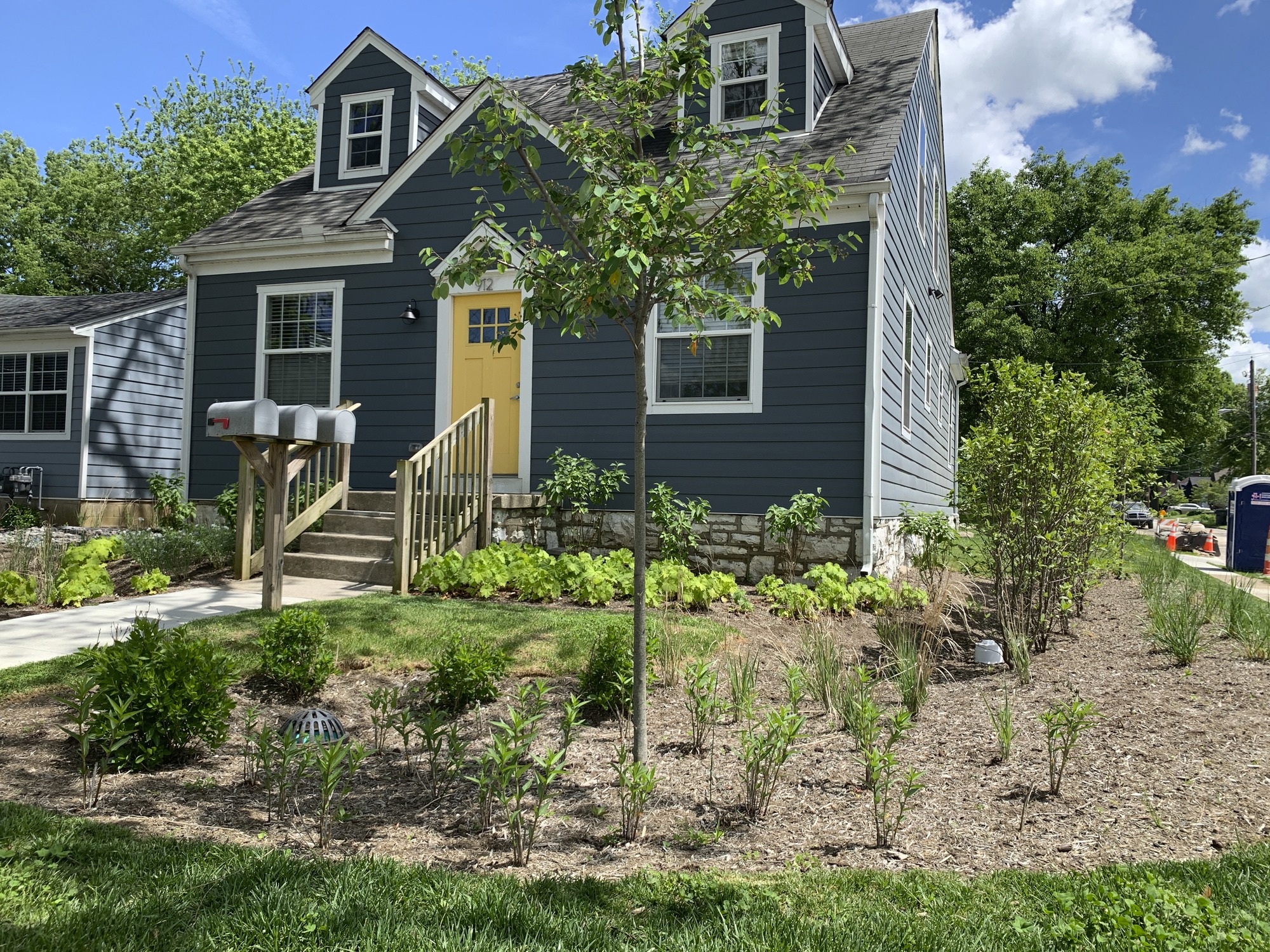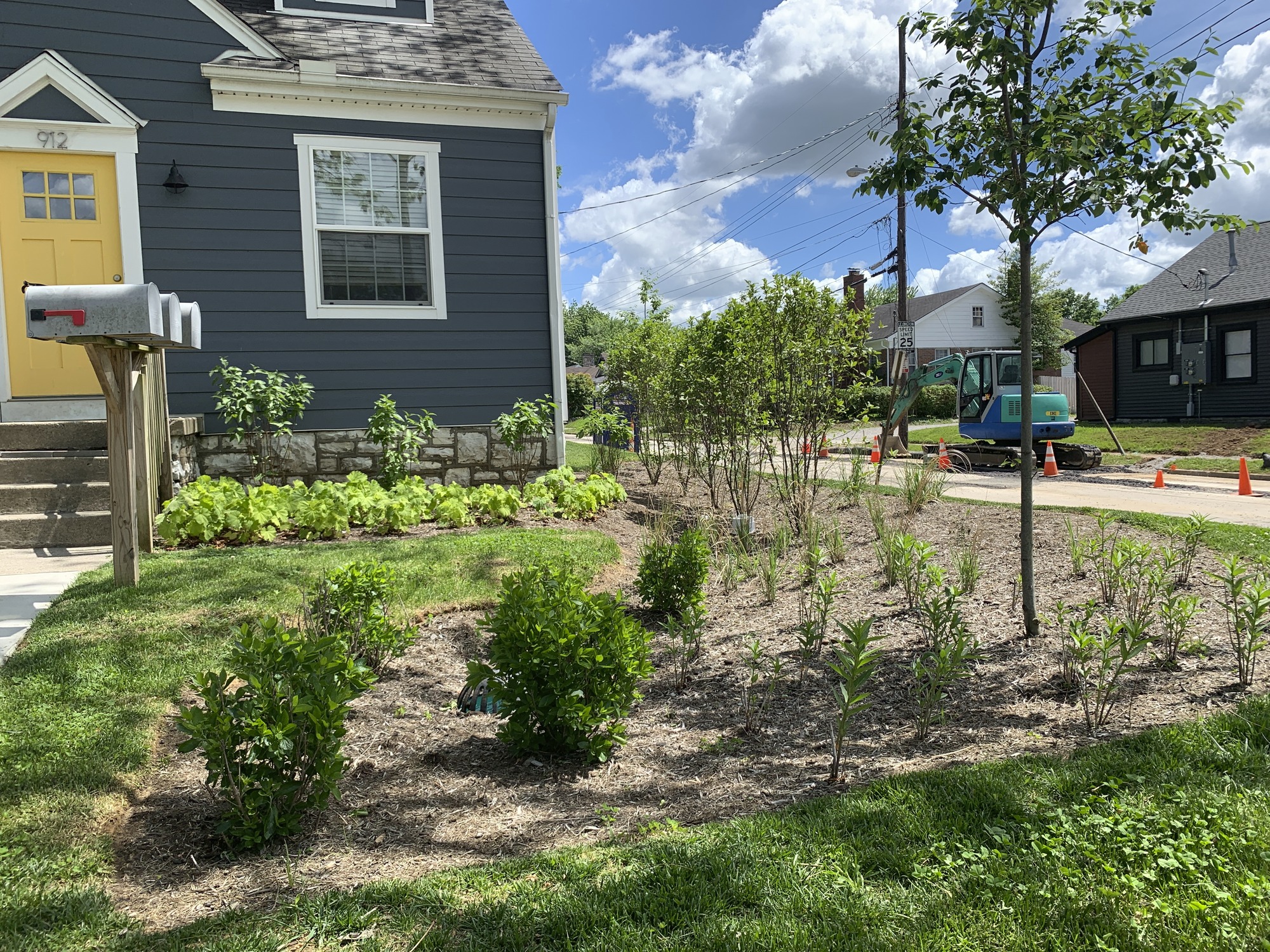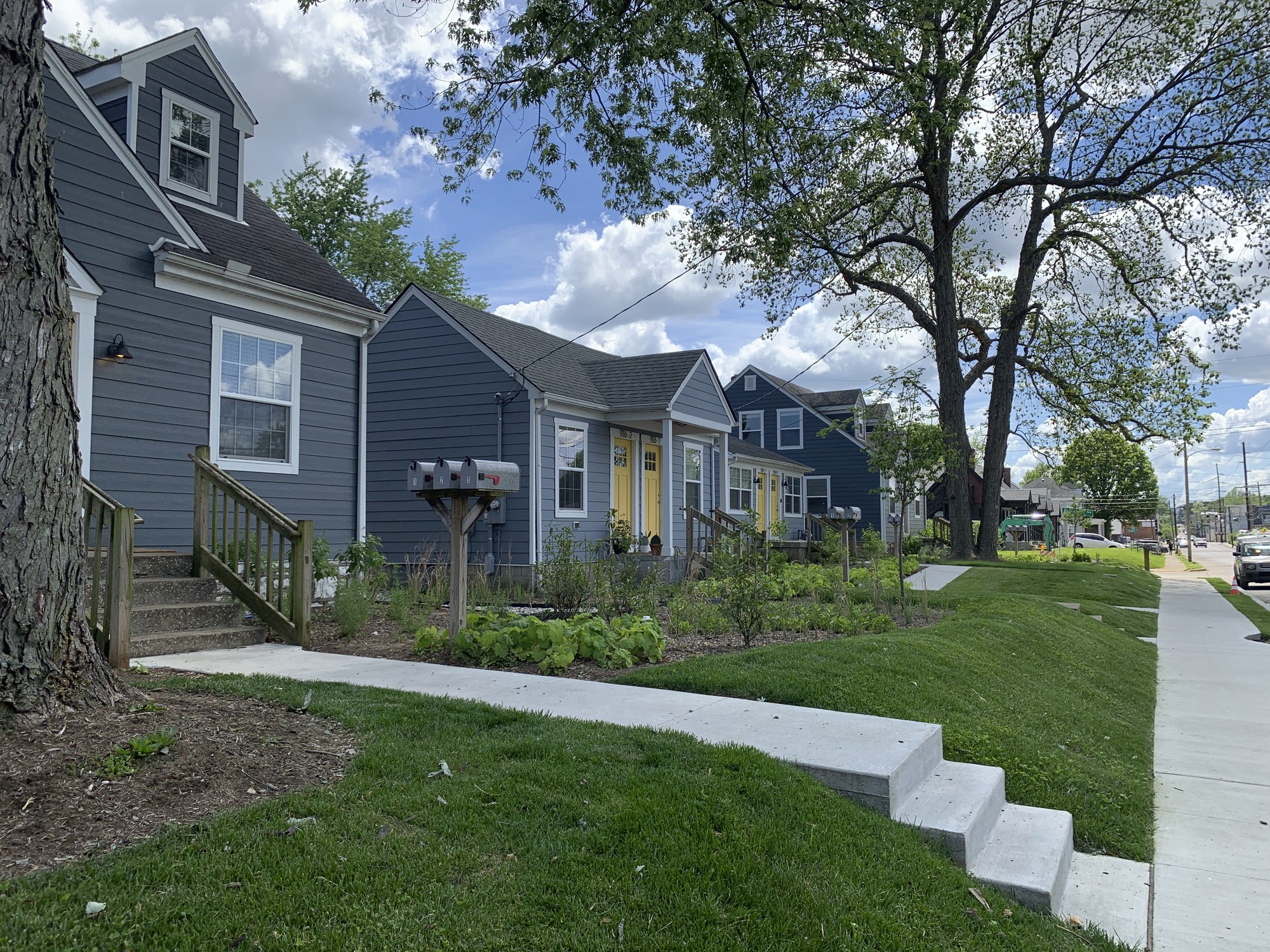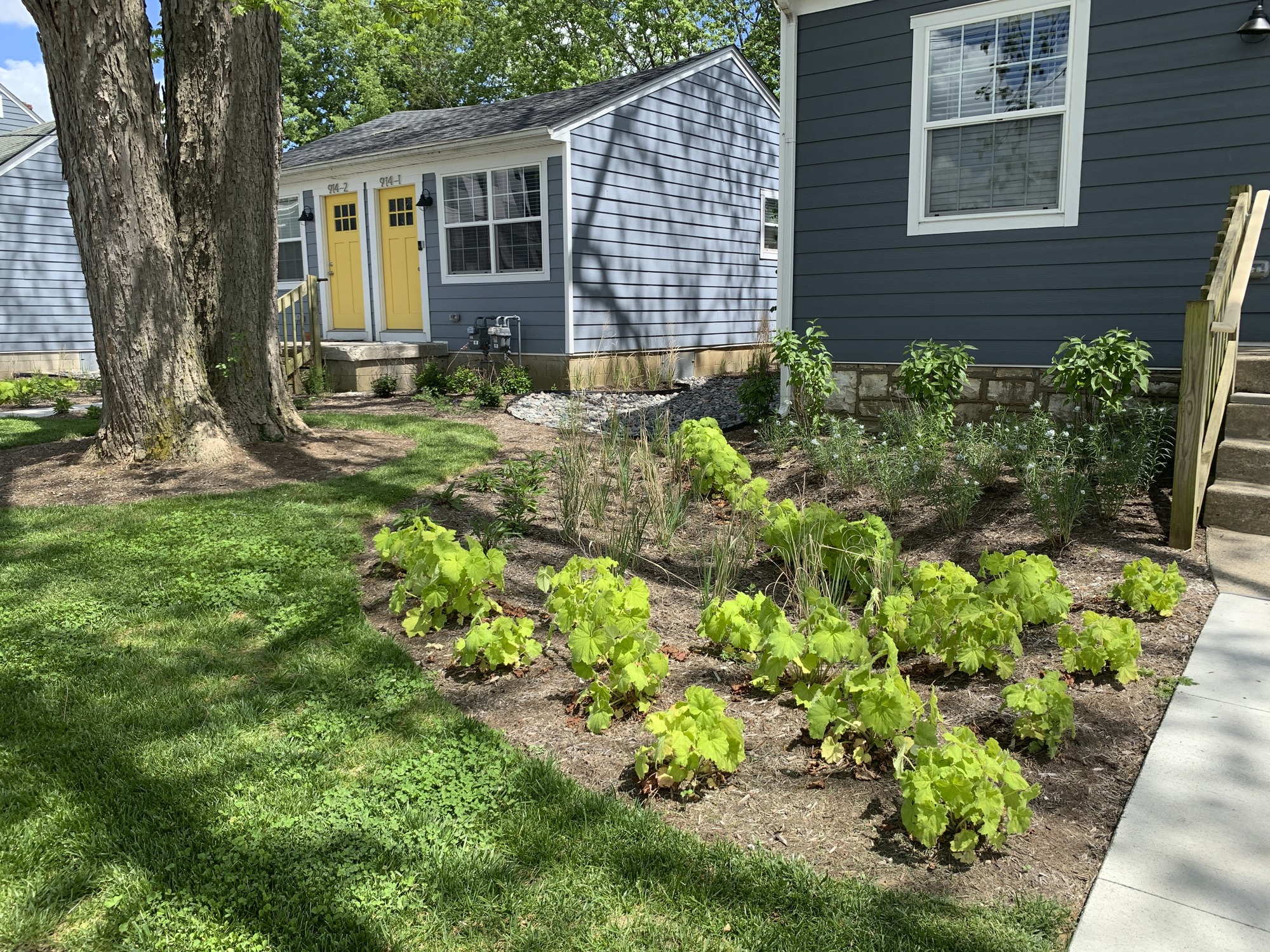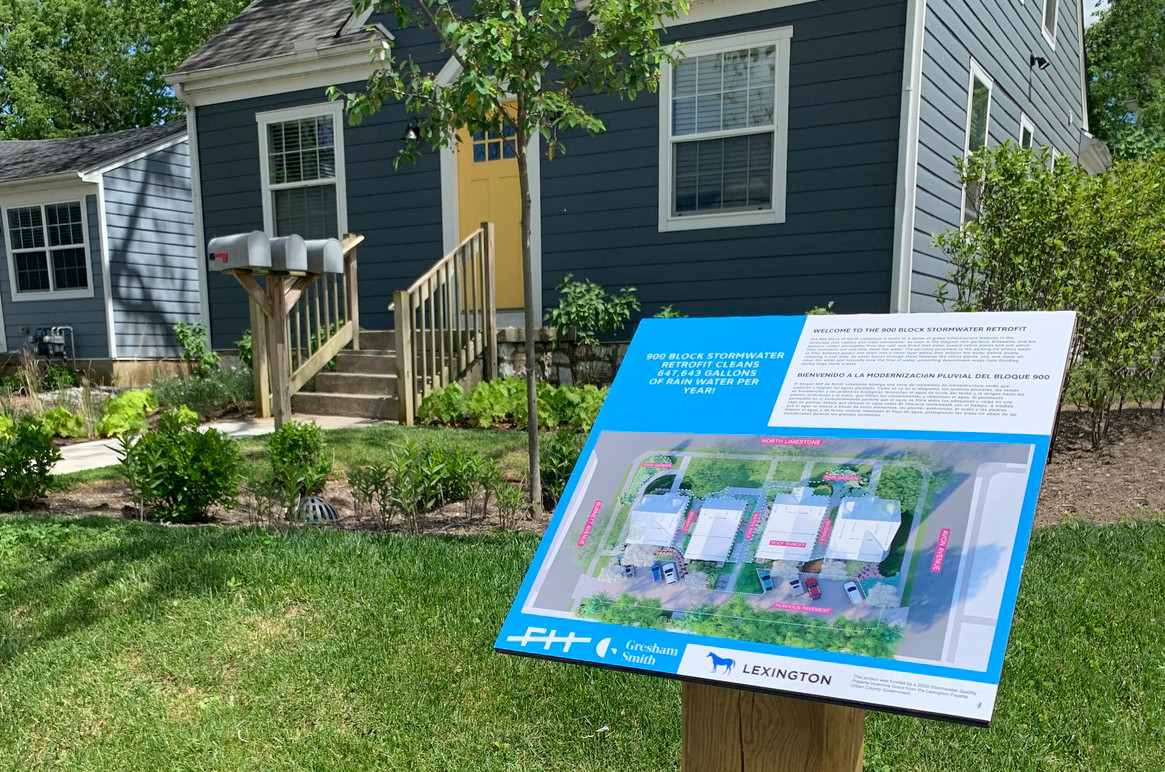Prone to flooding as a result of aging stormwater infrastructure, the North Side of Lexington, Kentucky has experienced significant water management issues for decades. Following an agreement to reach a consent decree set by the U.S. Environmental Protection Agency, the city started a grant program – the Stormwater Incentive Program – to encourage individual property owners and neighborhoods to invest in their property.
As a firm with a commitment to sustainable and resilient design, we decided to approach our client about applying for a grant through the incentive program, showcasing how we could invest in the property site itself, while also benefitting the city of Lexington on a larger scale. In the end, our Landscape Architects found a way to use natural elements to filter stormwater and reduce flooding, enrich the space with natural vegetation, and educate others about the benefits of the program.
residential buildings
units
parcels
Natural Filtration Through Sustainable Design
We transformed an existing gravel lot at the back of the site into one made of permeable pavers, creating a built-in stone filter basin. Unlike traditional parking lots, which send surface water containing pollutants to the storm sewer system and potentially impact natural waterways, the voids between permeable pavers catch the stormwater as it moves to the lowest point of the site, trapping particulates and pollutants and collecting water in a bioswale below, where it can stay until it is purposefully released after the peak of the storm.Finding Bioretention in Native Vegetation
Before construction began, much of the lot was comprised of lawn, with very little gardening and vegetation. Seizing the opportunity to enhance the landscape and curb appeal, we installed several gardens filled with native vegetation that will enhance bioretention and become future habitats for birds, insects, and other species important to Lexington.Creating a ‘water walk’ feature, the gutters on the homes connect to two raised bioswales, filled with stones that will help filter and slow down the rainwater before guiding it between the buildings to the front of the property and into the gardens.
Encouraging Others to Follow Our Lead
Our team designed two bilingual interpretive signs that explain the story behind the project, the stormwater retention features, and the benefits of clean water that are displayed on the property. We hope that this project inspires other property owners to follow our lead, employing sustainable stormwater management practice to maintain a healthy city and protect their communities for generations to come.Teamwork Is Essential
During construction, the need to add a new pipe for drainage caused more challenges than anticipated. After digging into the public roadway, we found old pipes, gas lines, water lines, and other utility lines that were in the way.Coordinating with the contractor, utility companies, public offices, and more, we identified which services were still live, and which were outdated and not used anymore. Eventually, we maneuvered the new pipe across the roadway, snaking it around and through the existing lines to reach the tie in structure.
Project Contact
Our team is committed to improving the places we call home.

